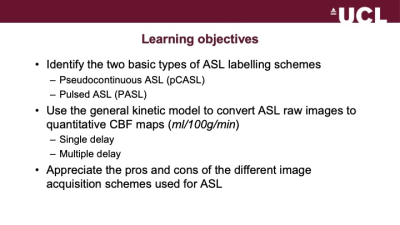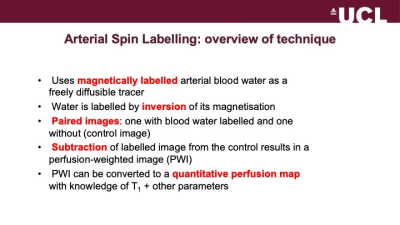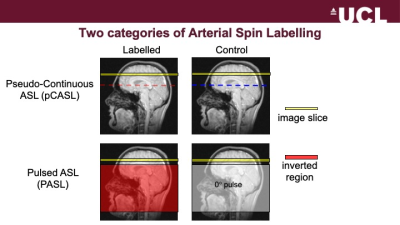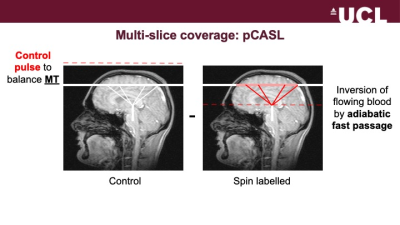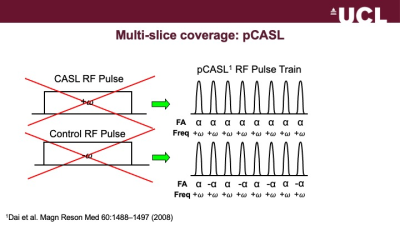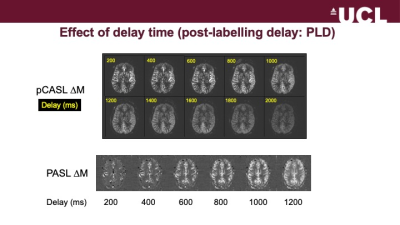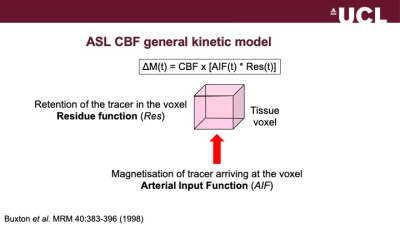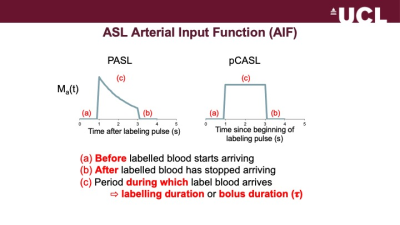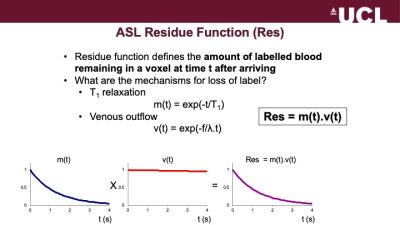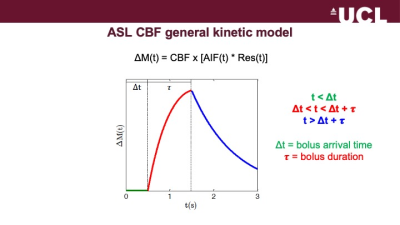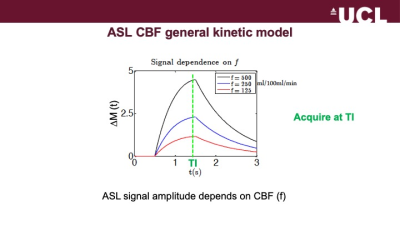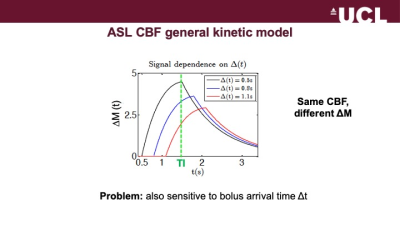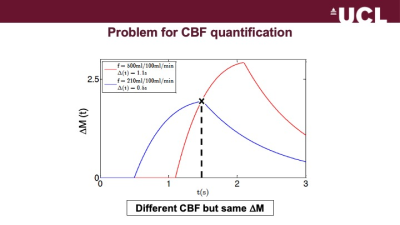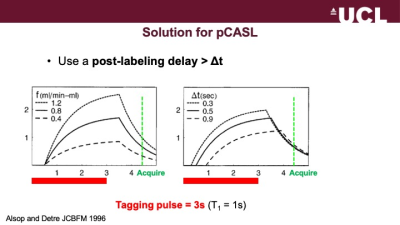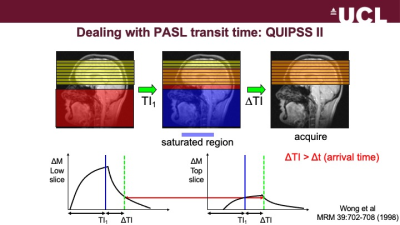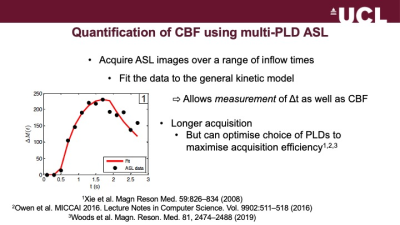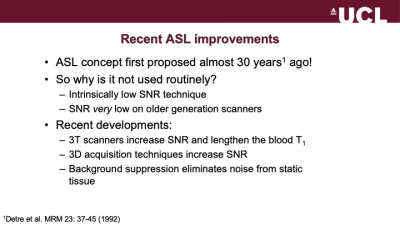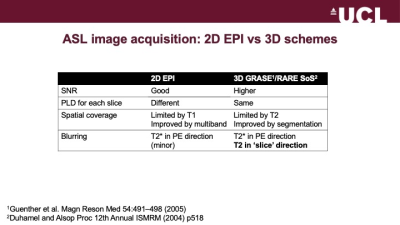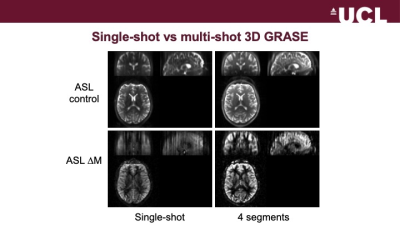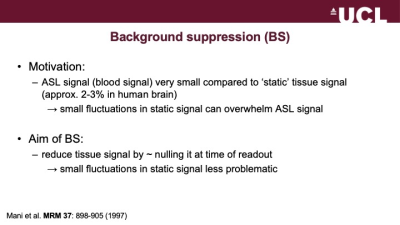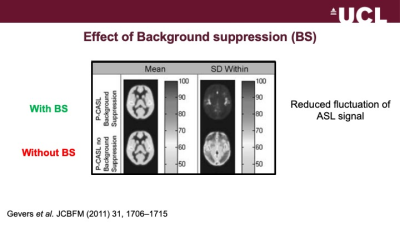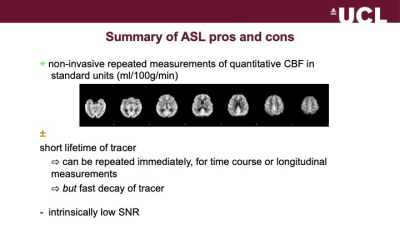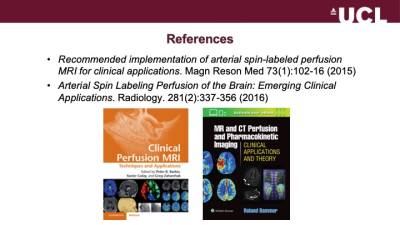ASL: Acquisition & Analysis in the Brain
David Thomas1
1UCL Queen Square Institute of Neurology, University College London, London, United Kingdom
1UCL Queen Square Institute of Neurology, University College London, London, United Kingdom
Synopsis
ASL is a non-invasive MRI method for quantitative mapping of cerebral blood flow (CBF). In this talk, I describe the two main categories of ASL – pseudocontinuous (pCASL) and pulsed (PASL) – and explain how the images acquired using these different acquisition schemes can be converted into CBF maps, using a general tracer kinetic model. I describe how ASL data can be acquired with either single or multiple inflow delay times, and the pros/cons of these two approaches. Lastly, I discuss some practical considerations (imaging method, background suppression) which also affect the quality and accuracy of ASL CBF maps.
